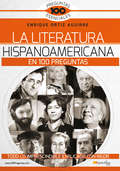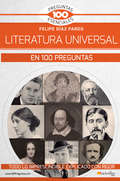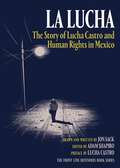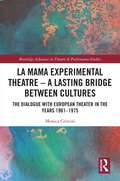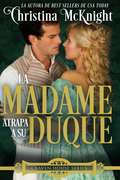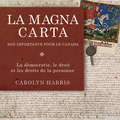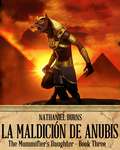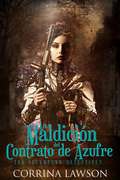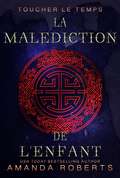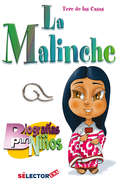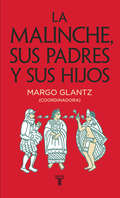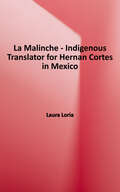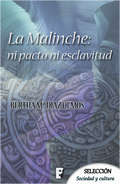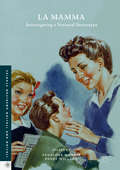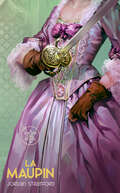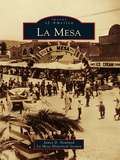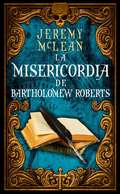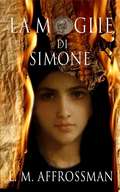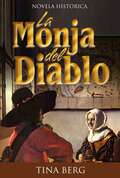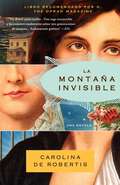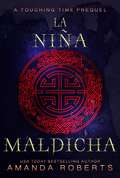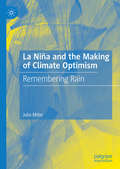- Table View
- List View
La Literatura hispanoamericana en 100 preguntas (100 Preguntas esenciales)
by Enrique Ortiz AguirreDescubra el intelectualismo borgiano, el fantástico torrente cortazariano, el preciosismo verbal dariano, la sugerente narrativa de García Márquez, la fantasía de Isabel Allende o el lirismo en prosa de Vargas Llosa. Las obras y escritores fundamentales, sus mecanismos retóricos, tendencias literarias y estilos, la esencia del realismo mágico y la auténtica naturaleza del boom. ¿Gabriela Mistral representa una literatura feminista?, ¿Conoces los textos más eróticos de Julio Cortázar?, ¿Cómo influye Pablo Neruda en los poetas españoles?, ¿Cuál es el origen de la novela del tirano?, ¿Relación entre los cuentos de Bioy Casares y el género policiaco?, ¿Cuáles son las principales Vanguardias literarias hispanoamericanas?,¿Qué tipo de cuentista es Jorge Luis Borges?, ¿Qué rifirrafe hubo entre Vargas Llosa y García Márquez?
La Literatura universal en 100 preguntas (100 Preguntas esenciales)
by Felipe Díaz PardoDescubra los movimientos, obras y autores fundamentales del patrimonio literario de la humanidad. Aprenda a distinguir épocas y estilos, conozca la esencia de los textos más representativos de manera entretenida y rigurosa, aprenda a disfrutar y comprender mejor las obras que interpretan el mundo que nos rodea. Una completa panorámica del tesoro cultural de las letras universales. ¿Qué tiene que ver el vino con el nacimiento del teatro? ¿Qué nos enseña El Libro de los muertos, monumento de la literatura egipcia? ¿Cuándo nace la bohemia? ¿Qué sabemos de la literatura japonesa? ¿Qué historia cuentan los escritores de la Generación perdida? ¿Qué personajes femeninos de la literatura universal es necesario conocer? ¿Por qué están vigentes todavía los temas de las obras de Shakespeare? ¿A qué llamamos novela gótica? ¿Quiénes son los escritores con más luces de la literatura europea del siglo XVIII? ¿Cuáles son las grandes obras de la literatura juvenil? ¿Qué nuevas formas literarias inventa la literatura más actual?
La Lucha: The Story of Lucha Castro and Human Rights in Mexico
by Jon SackA front-line human rights defender fighting murderous impunity in the Mexican borderlands The Mexican border state of Chihuahua and its city Juárez have become notorious the world over as hotbeds of violence. Drug cartel battles and official corruption result in more murders annually in Chihuahua than in wartorn Afghanistan. Thanks to a culture of impunity, 97 percent of the killings in Juárez go unsolved. Despite a climate of fear, a small group of human rights activists, exemplified by the Chihuahua lawyer and organizer Lucha Castro, works to identify the killers and their official enablers.This is the story of La Lucha, illustrated in beautiful and chilling comic book art, rendering in rich detail the stories of families ripped apart by disappearances and murders—especially gender-based violence—and the remarkably brave advocacy, protests, and investigations of ordinary citizens who turned their grief into resistance.
La MaMa Experimental Theatre – A Lasting Bridge Between Cultures: The Dialogue with European Theater in the Years 1961–1975 (Routledge Advances in Theatre & Performance Studies)
by Monica CristiniThis book focuses on the role of La MaMa Experimental Theatre within Avant-garde theater during the 1960s and 1970s. This study investigates the involvement of the Off-Off Broadway circuit in the Avant-garde experimentations both in the United States (New York specifically) and in Europe. This exploration shows the two-way influence – between Europe and the United States – testified by documents gathered in years of archival research. In this relevant artistic exchange, La MaMa (and Ellen Stewart as its founder and artistic director) emerges as a key element. La MaMa’s companies brought to Europe the American culture and the New York underground culture, while their members learnt European training techniques by attending workshops or taking part in the research of Eugenio Barba, Jerzy Grotowski, and Peter Brook, and brought their principles back to the United States. This book goes through a chronological path that presents some key cases of collaboration between the above-mentioned European masters and some La MaMa’s artists and companies: Tom O ’Horgan and La MaMa Repertory Troupe, the Open Theatre, Andrei Serban and The Great Jones Repertory Company, La MaMa Plexus. This book will be of great interest to students and scholars in theater and performance studies.
La Madame atrapa a su Duque.
by Christina McKnightMadame Marce Davenport , es una mujer orgullosa de lo que ha logrado con su familia y con la escandalosa Craven House, a pesar de haber sido arrojada de su casa y despojada de su lugar en la sociedad de pequeña. Excepto que todo está construido en base a una mentira. Cuando un duque arrogante entró en su casa años atrás, ofreciéndole una forma de mantener el burdel abierto, y ella aceptando el trato entro en un juego de engaños. Pero ahora que sus hermanos ya han encontrado su felicidad, Marce finalmente puede vivir la vida que siempre había deseado: una basada en la verdad. Y eso significa cortar los lazos con el hombre que ha reclamado demasiados días de ella, tanto en la realidad como en la fantasía. Rowan Delconti, el duque de Harwich, un hombre que albergo demasiado odio por mucho tiempo: con su padre, con la mujer que rompió el matrimonio de sus padres y con los niños que se ganaron el amor del padre. Está decidido a que su madre no vuelva a ser infeliz, incluso si eso significa fingir estar casado con Marce, para que su madre piense que ha encontrado al amor de su vida. Pero la bella dama alimenta su fuego como ninguna, y la farsa comienza a sentirse muy real. Cuando los secretos de Marce y Rowan finalmente salen a la luz, su pasión puede no ser suficiente para detener el dolor del pasado. ¿Pueden dos personas que se han hecho tanto mal, descubrir un día que en realidad son el uno para el otro?
La Magia del Pan di Zenzero: Una Storia sui Desideri di Natale
by Sandra SookooA volte l’unico modo per capire quanto si stimi un uomo è ricorrere alla magia del pan di zenzero. Londra 1888, Mrs Eleanor Redding, donna dal carattere scontroso, lavora per la Compagnia del Telegrafo Western Union, il che le dà una certa indipendenza, ma lavorare è per lei anche un modo per nascondersi da un passato deludente, in America. Quando accidentalmente intercetta un messaggio in codice Morse che allude a una clandestina attività criminale, prontamente accetta la sfida. Almeno così non penserà di essere ancora una volta sola per le vacanze di Natale. Perché gli uomini non riescono a guardare al di là delle sue spine e delle cicatrici del cupore, e non fanno di tutto per conquistarla? Mr Cameron Hallewell, nipote del conte di Albemarle, è impiegato presso il Ministero dell’Interno e si occupa di affari esteri. Il suo lavoro consiste nel proteggere gli interessi britannici, ma desidera che una donna lo sorprenda inaspettatamente, una donna che lo desideri per come è, non per la sua posizione sociale. Quando arrivano notizie di un agente segreto straniero che si aggira per Victoria Station allo scopo di perpetrare un atto terroristico, si mette sulle sue tracce... ma troverà invece una donna affascinante che pedina sconosciuti sui marciapiedi della stazione ferroviaria. Forse è proprio lei una spia? Sono come il diavolo e l’acqua santa, ma nonostante i rovi di spine intorno al cuore di Eleanor e la delusione d’amore di Cameron con i suoi segreti, fra i due scoccherà la scintilla. Questa improbabile coppia si metterà al lavoro per stanare la spia ed evitare che il peggio si abbatta su Londra. I due però si accorgeranno di essersi innamorati e cominceranno a fidarsi l’uno dell’altra. È Natale, Eleanor e Cameron verranno trascinati nell’intrigante e inaspettata prospettiva di un corteggiamento e in una storia d’amore che attraverserà i secoli... se solo sapranno abbandonarsi al desiderio e alla passion
La Magna Carta, son importance pour le Canada: La démocratie, le droit et les droits de la personne
by Carolyn HarrisLa Magna Carta avait été conçue au départ dans le but d’assurer que le roi Jean respecte les us et coutumes de la noblesse au XIIIe siècle. Au cours des huit cents années qui se sont écoulées depuis sa création, elle est devenue la pierre angulaire des idéaux de la démocratie pour tous. La « Grande Charte » a inspiré de nombreux documents portant sur le respect des droits de la personne, y compris la Déclaration d’indépendance des États-Unis, la Déclaration des droits de l’homme et du citoyen de la France, et la Déclaration universelle des droits de l’homme des Nations Unies. Pour les Canadiens, la Magna Carta a servi de modèle pour d’importants documents, depuis la Proclamation royale de 1763, qui a façonné les colonies britanniques de l’époque et les relations de celles-ci avec les Premières Nations, jusqu’à la Charte des droits et libertés. La Magna Carta : son importance pour le Canada est une célébration des huit cents années d’existence du document ainsi que de son influence sur le Canada et le monde entier.
La Maldición de Anubis
by Kevin Heit Nathaniel Burns Viveki Devi Ma1231 A.C., Valle de los Reyes, Antiguo Egipto Secciones incompletas del libro de la muerte halladas en la tumba de Ramesses y la muerte de un prominente escriba de tumbas provocan temor a la maldición de Anubis en Deir el-Medina. Mientras que la falta de testigos y una comunidad de trabajadores muy unidos estorban, Neti-Kerty y Shabaka investigan en un tiempo en que todo Thebes espera la llegada del faraón para el bello festival del valle. Cuando Neti comienza a sentir sensaciones extrañas y la vida del faraón corre riesgo se evidencia que hay una mayor y más siniestra intriga en los eventos.... La Maldición de Anubis nos lleva a una tierra impregnada de magia y misterio. Pinta una detallada imágen del Antiguo Egipto en toda su gloria. Recreando fielmente una de las eras más destacables en la historia de Egipto, el autor Nathaniel Burns teje una estremecedora y siniestra historia de los misterios del Antiguo Egipto revelada a través de un elenco de personajes que el lector morderno reconocerá aunque los milenios hayan pasado. Así que enciende un incienso, siéntate junto a la luz y retira las cortinas del sombrío pasado con esta fascinante historia de amor e intriga entre los vivos y los muertos en una de las civilizaciones más intrigantes de la historia. También disponible en Amazon: La Hija del Momificador (La Hija del Momificador serie #1) Princesa de Egipto (La Hija del Momificador serie #2)
La Maldición del Contrato de Azufre: Los Detectives Steampunk, Libro 1 (Los Detectives Steampunk #1)
by Corrina LawsonEn un Londres victoriano donde la magia da poder a la tecnología de vapor... Joan Krieger sueña con revolucionar la moda para este nuevo y modernizado mundo, pero un enemigo oculto acecha el negocio de costura de su familia, convirtiendo su sueño en una pesadilla. Cuando Joan atestigua que una clienta es asesinada con magia, busca al único hombre que puede ayudarla: Gregor Sherringford, consultor detective. Juntos, serán un equipo formidable, pero su investigación levantará una cortina de tristeza y secretos que amenazan todo en la vida de Joan. Solo arriesgando su propia alma podrá descubrir la verdad, una verdad que Gregor teme que ella no podrá sobrevivir.
La Malediction de L'Enfant
by Amanda RobertsEn un seul instant, sa vie ne fut plus la sienne... Dans les rue de Péking, Sparrow survit en faisant les poches des passants et en volant de la nourriture aux marchands de rue, jusqu'au jour où elle touche un objet qui la précipite dans le temps, éveillant en elle un pouvoir qu'elle ne comprend pas, ni ne contrôle. Sparrow est obligée d'utiliser sa "ruse" pour dire la bonne fortune, un effort qui, au mieux, l'épuise, au pire, pourrait la tuer. Pour Sparrow, chaque jour devient un cauchemar auquel elle a peur ne pouvoir échapper. Puis, elle attire l'attention de l'Impératrice elle-même. Une femme d'une crauté et d'un pouvoir incommensurables - la femme qui a la capacité de changer la destinée de Sparrow pour toujours... Ne manquez pas La Malédiction de l'Enfant, le préquel excitant de la trilogie Toucher le Temps.
La Malinche
by Tere de las CasasLa colección Biografías para niños comparte este lado infantil de la vida de emperadores, libertadores, caudillos y presidentes. En esta obra descubrirás a la niña La Malinche, nativa de Painala, cerca del puerto de Coatzacoalcos, en Veracruz. Ella misma te narrará que su papá la vendió como esclava a un cacique de Tabasco; que cada vez que cometía alguna travesura, su castigo era oler chile, que el cenzontle le brindó el don de aprender varias lenguas, entre ellas el náhuatl, el maya y el castellano; que las niñas mayas jugaban a la casita con sus muñecas de trapo e iban a la playa, y muchas otras actividades que también te divertirán.
La Malinche, sus padres y sus hijos
by Margo Glantz¿Quién fue realmente la Malinche? ¿Por qué ocupa un lugar tan importante en la historia, la identidad y la idiosincrasia de los mexicanos? La Malinche es una de las figuras fundacionales de la historia de México, pero su historia siempre ha sido objeto de polémicas y contradicciones. Intérprete y compañera de Hernán Cortés, ha sido deificada por algunos y satanizada por otros, ha inspirado tragedias, dramas románticos, crónicas, poemas y hasta caricaturas. Como todo personaje mítico e histórico, es necesario estudiarla periódicamente, indagar en nuestras raíces, revisar el mestizaje y replantear sus andanzas actuales y pasadas para aclarar los múltiples significados de uno de los enigmas culturales más poderosos en México y Latinoamérica. La Malinche toca fibras tan sensibles, que su figura se ha visto envuelta por el mismo halo de sospecha que rodeó a Eva a partir de su expulsión del paraíso; ha sido condenada al silencio y convertida en uno de los personajes más frecuentes de la escritura criolla. Este volumen reúne las memorias del coloquio titulado "La Malinche, sus padres y sus hijos", en el que participaron Carlos Monsiváis, Roger Bartra, Hernán Lara Zavala, entre otros connotados escritores. En su conjunto, estos textos ofrecen una mirada panorámica sobre los mitos, usos y costumbres que han consolidado a Malintzin como el paradigma por excelencia del mestizaje.
La Malinche: Indigenous Translator for Hernan Cortes in Mexico (Women Who Changed History)
by Laura LoriaWomen's contributions throughout history are often overlooked or minimized when compared to those of men. Readers will learn the true story of Malinche, a slave girl who was instrumental in the Spanish conquest of Mexico. Her courageous but brief life is examined, focusing on her time with explorer Hernán Cortés. Myth and fact are discussed and explained, with primary sources to illustrate this period in Mexican history. Readers will connect with the story of a young person who bravely endured terrible circumstances to change Mexico forever in the 1500s. Her legacy in Mexico, folklore, art, and politics endures today.
La Malinche: ni pacto ni esclavitud
by Bertha M.ª Díaz OlmosUn viaje apasionante por la historia de La Malinche, su vida y el papel que desempeñó dentro del momento histórico de México y España. En cada cultura e historia siempre hay una mujer que provoca el cambio y da un vuelco al milenio. En el caso de México es y será Malintzin, Doña Marina, La Malinche. Un relato que se adentra en las entrañas y el corazón, de una figura determinante de la conquista española; un arquetipo femenino mexicano. Al mismo tiempo que se describe su labor como intérprete y consejera, se incide en su inteligencia y su capacidad para adelantarse a su época. Una narración enmarcada en el entorno prehispánico en el que vivió y el papel que desempeñó dentro del momento histórico de México y España. Un urdido dialogo poético de ficción entre doña Marina/La Malinche y las opiniones de literatos de diferentes países que han escrito sobre ella, que transmite su fuerza y determinación, para sobrevivir al nuevo entorno y a su complicada relación sentimental con el conquistador Hernán Cortés.
La Mamma: Interrogating a National Stereotype (Italian and Italian American Studies)
by Penelope Morris Perry WillsonThe idea of the “mamma italiana” is one of the most widespread and recognizable stereotypes in perceptions of Italian national character both within and beyond Italy. This figure makes frequent appearances in jokes and other forms of popular culture, but it has also been seen as shaping the lived experience of modern-day Italians of both sexes, as well as influencing perceptions of Italy in the wider world. This interdisciplinary collection examines the invented tradition of mammismo but also contextualizes it by discussing other, often contrasting, ways in which the role of mothers, and the mother-son relationship, have been understood and represented in culture and society over the last century and a half, both in Italy and in its diaspora.
La Maupin (Sword Girl)
by Jordan StratfordTeenage swordswoman. Grave-Robber. Arsonist. Nun. Assassin. Superstar. La Femme Nikita of the 1600s.The true story of 17 year old Julie d'Aubigny, who took 17th century Paris by storm, by stardust, and by steel. Queen of the underground dueling scene among the wealthy sons of noblemen, daughter of the King's fencing master, she rose in scandal, blood, and reputation to become the leading star of the Paris Opera.Distilled from French “Yé Yé” pop, 1980s Delacorta beach novellas, and Luc Besson films, Sword Girl: La Maupin is a Rococopunk sugar-frosted hand grenade.
La Mela di Cupido
by Olga KryuchkovaLa Mela di Cupido, di Ol'ga Krjučkova. Una storia d'amore e d'avventura, divertente e umoristica, ambientata nella Russia imperiale del XIX secolo. Sergej L’vovič Zav’jalov, maggiore d’artiglieria, si reca in villeggiatura dalla zia Aglaja Dmitrievna. Zav’jalov, su insistenza della zia, inizia a corteggiare la vicina Polina Veresova. Trascorrono una notte d’amore nel casino di caccia. Il diario personale di Polina capita nelle mani del maggiore. Sergej L’vovič ne è profondamente turbato e lascia immediatamente il ‘nido d’amore’. Senza ulteriori spiegazioni, lascia la casa accogliente di Aglaja Dmitrievna e si reca ospite da un amico. La zia, delusa, raccoglie un cestino di mele da dare al nipote per il viaggio. Zav’jalov prende il treno e si ritrova in uno scompartimento con un adolescente e il suo precettore inglese. Il maggiore non poteva certo immaginare che questo incontro gli sarebbe stato fatale. In quel frangente l’adolescente si comporta in modo provocatorio e, senza chiedere il permesso, prende una mela dal cesto di Zav’jalov. In risposta, il giovane insolente riceve un ceffone dal maggiore. Ne nasce una lite. Nel frattempo, Polina si rende conto che Sergej è fuggito, decide di andare a cercarlo e chiarirsi a tutti i costi. Zav’jalov raggiunge senza ulteriori problemi la tenuta del suo compagno d’armi Sobolev; presto arriva anche Polina e affitta una camera nella vicina locanda. Sobolev e Zav’jalov vanno a caccia e sorprendono un bracconiere nella tenuta di caccia di Sobolev. Zav’jalov vi riconosce l’inglese del treno. Nel mentre, Polina spia Zav’jalov e viene sorpresa dalla pioggia. Decide di nascondersi in un piccolo fienile che si trova accanto alla villa di Sobolev: destino vuole che di lì passi per caso l’inglese…
La Mesa
by James D. Newland La Mesa Historical SocietyOn February 16, 1912, La Mesa Springs, a community of 700 citrus farmers, home seekers, developers, and businessmen, incorporated into the City of La Mesa. Located amongst the rolling hills and mesa lands between San Diego and El Cajon, today's suburban city of over 56,000 is still renown for its small-town character, featuring its historic "village" business district, family-friendly neighborhoods, good schools, and ample retail and recreational amenities. The area's centuries-old prehistory and history can be traced to the natural springs that attracted stockman Robert Allison in 1869. Allison Springs, later renamed, prospered and grew after the arrival of the railroad in 1889. After incorporation, the young city grew steadily, reaching 3,925 residents by 1940. Post-World War II La Mesa exemplified the exponential suburban growth of the region, expanding to the north and west of the old downtown to accommodate 50,000-plus residents by 1980--all were attracted, as today, to the "Jewel of the Hills."
La Mettrie: Medicine, Philosophy, and Enlightenment
by Kathleen WellmanJulien Offray de la Mettrie, best known as the author of L'Homme machine, appears as a minor character in most accounts of the Enlightenment. But in this intellectual biography by Kathleen Wellman, La Mettrie--physician-philosophe--emerges as a central figure whose medical approach to philosophical and moral issues had a profound influence on the period and its legacy.Wellman's study presents La Mettrie as an advocate of progressive medical theory and practice who consistently applied his medical concerns to the reform of philosophy, morals, and society. By examining his training with the Dutch physician Hermann Boerhaave, his satires lampooning the ignorance and venality of the medical profession, and his medical treatises on subjects ranging from vertigo to veneral disease, Wellman illuminates the medical roots of La Mettrie's philosophy. She shows how medicine encouraged La Mettrie to undertake an impiricist critique of the philosophical tradition and provided the foundation for a medical materialism that both shaped his understanding of the possibilities of moral and social reform and led him to espouse the cause of the philosophers.Elucidating the medical view of nature, human beings, and society that the Enlightenment and La Mettrie in particular bequethed to the modern world, La Mettrie makes an important contribution to our understanding of both that period and our own.
La Misericordia de Bartholomew Roberts
by Jeremy McLean¿Se puede ser pirata y hombre de Dios al mismo tiempo? Bartholomew Roberts ha sido un pirata durante seis meses, y en el fondo de su mente esa pregunta persiste esperando ser respondida. "¿Pueden los piratas, los corsarios y todos los demás ser buenos hombres?" Roberts perdió su fe cuando vio a otros que afirmaban ser cristianos religiosos que se beneficiaban del pecado, y desde entonces ha traído su propio tipo de justicia sobre ellos. Sin embargo, la postura de Roberts ha causado una división dentro de su tripulación, y algunos pretenden deponerlo como capitán. Con enemigos por todos lados, Roberts necesita encontrar su respuesta rápidamente para no encontrarse en el fondo del casillero de Davey Jones. ¿Roberts encontrará su respuesta a tiempo y seguirá siendo un pirata o dejará la vida atrás? Vea a dónde lo llevan las pruebas de Roberts en sus historias cortas llenas de fe, acción y aventura ambientadas durante la Edad de Oro de la Piratería.
La Moglie Di Simone
by Lesley AffrossmanSono passati tre decenni dalla morte di Gesù di Nazareth su una croce romana, e la Giudea è in bilico sull'orlo dell'apocalisse. Intrappolata nell'orrore che ispirerà il Libro della Rivelazione, una giovane donna sta combattendo per la sopravvivenza. Nei giorni bui che seguono la devastazione romana di Gerusalemme nel 70 D.C., la diciannovenne Shelamzion bat Judah si ritrova prigioniera e in attesa sia della sua esecuzione che di suo marito, l'ex capo dei ribelli Simone bar Gioras. Sola e dimenticata, sembra che ci siano poche ragioni per continuare a vivere, ma una strana amicizia inizia a crescere tra Shelamzion e il suo vecchio, austero carceriere romano, Fabius Cornelius Grammaticus. Nella sua pretesa di essere riconosciuto come storico nello stile di Livio, è a lei che si rivolge per registrare la vera versione degli eventi che stanno dietro l'insurrezione in Giudea, che ha portato alla distruzione del suo paese. Il tempo sta per scadere, tuttavia, e involontariamente la storia viene riscritta dalla mano di un traditore.
La Monja del Diablo
by Tina BergUn don mágico. Una guerra sangrienta. Un gran amor. Cuando los padres de Pauline son cruelmente asesinados en medio de la agitación de la Guerra de los Treinta Años, la joven se encuentra repentinamente sola en el mundo. Pero por suerte tiene un misterioso don que la ayuda a sobrevivir en medio de la violencia y el despotismo: el mal de ojo. Cuando Pauline conoce al misterioso falsificador Jakob Kuhbier, su vida parece dar por fin un giro positivo. La joven también conoce a Sebastián, un estudiante, y se enamora perdidamente de él. Pero, ¿Cómo reaccionará su enamorado al enterarse de que ella tiene el mal de ojo? Pero este problema se desvanece cuando Pauline vuelve a encontrarse inesperadamente con el asesino de su padre y su madre. Para empeorar las cosas, sus poderes mágicos están desapareciendo. ¿Serán suficientes para derrotar al despiadado enemigo?
La Montaña Invisible
by Carolina De Robertis"La clase de novela por la que uno se acuesta tarde para terminarla y acostado sigue pensando en ella". --The San Francisco Chronicle En el primer día del siglo XX, un pequeño pueblo en lo más profundo del campo uruguayo se reúne para ver un milagro --la misteriosa reaparición de Pajarita, una niña que se había perdido. Años después, Pajarita comenzará una estirpe ferozmente independiente, tres generaciones de mujeres que lucharán por crearse una vida en su querida Uruguay, una patria que nutre sus almas a la vez que pone a prueba sus espíritus: su hija Eva, una frágil pero ferozmente obcecada belleza decidida a ser poeta, se sobrepondrá a una desgarradora traición para seguir un camino poco convencional. Y la hija de Eva, Salomé, despertará tanto a la sensualidad como al compromiso político en medio de los turbulentos años sesenta. La montaña invisible es una mordaz celebración del poder del amor familiar, de la voluntad de supervivencia en las circunstancias más desesperadas y, sobre todo, del intenso vínculo entre madres e hijas.From the Trade Paperback edition.
La Niña Maldicha
by Amanda RobertsEn un instante, su vida ya no le pertenecía... En las calles de Perking, Sparrow sobrevive robando monedas de los bolsillos y comida de los vendedores de la calle, hasta que un día toca un artículo que lo lleva a viajar por el tiempo, despertando un poder que no puede controlar ni comprender. Sparrow se ve obligada a usar este “truco” para contar el futuro, un esfuerzo exhaustivo y peligroso. Cada día se convierte en una pesadilla de la que Sparrow teme no poder escapar. Hasta que capta la atención de la misma Emperatriz. Una mujer de inmensurable crueldad y poder – una mujer con la habilidad de cambiar el destino de Sparrow para siempre… No te pierdas The Child’s Curse, la emocionante precuela de la trilogía Touching Time.
La Niña and the Making of Climate Optimism: Remembering Rain
by Julia MillerThis book examines the deep connection Australians have with their climate to understand contemporary views on human-induced climate change. It is the first study of the Australian relationship with La Niña and it explains how fundamental this relationship is to the climate change debate both locally and globally. While unease with the Australian environment was a hallmark of early settler relations with a new continent, this book argues that the climate itself quickly became a source of hope and linked to progress. Once observed, weather patterns coalesced into recognizable cycles of wet and dry years and Australians adopted a belief in the certainty of good seasons. It was this optimistic response to climate linked to La Niña that laid the groundwork for this relationship with the Australian environment. This book will appeal to scholars and students of the environmental humanities, history and science as well as anyone concerned about climate change.
